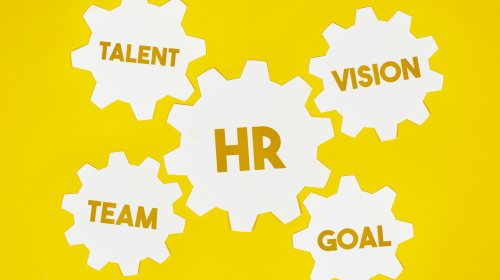HR software is used by businesses to boost productivity by organising employee information. Human Resources is a wide ranging area and HR software can play a part if almost every area.
Using it can streamline many processes, or even automated them, which allows employees across your business to be more productive every day.
What is HR Software Used For?
HR software can be used for lots of things in your business. Here are just some of the functions that these systems can do.
- Centralised store of employee information
- Self-Service absence management
- Distribution of company handbook and policies
- Recruitment and onboarding of new employees
- Organisational mapping
- Performance reviews and target setting
- Track Training and Professional Development
- Benefits and compensation recording
- Reporting and analysis of your employees
Who uses Human Resources Software?
Pretty much every one of your employees can make use of HR software. Your management and HR department may spend a lot of time using HR software, but every other employee could benefit from having access to a self-service area of the software.
What are the benefits of HR Software?
The biggest benefit of using HR software is time-saving. Many tasks regarding your employees are repetitive. HR software can be used to simplify your repetitive tasks and reduce them to just a couple of clicks.
Another major benefit HR software can have on your business is to reduce bottlenecks in certain processes, such as holiday requests. When you’re using spreadsheets for holiday planning, checking if the request can be approved is usually left to the HR team directly. If there are lots of requests, then this could become a bottleneck very easily. With HR software, it is possible to distribute the approval process out to team or department leaders because they can clearly see all the information they need.
Other benefits include:
- More accurate employee information
- Improved visibility of company policies
- More accurate and up to date reporting
- Improvements to long term employee planning
- Continuous feedback
- Increased employee engagement
Are all HR systems equal?
In a word, no. There are many different types of an HR software systems and each of them offers differing amounts of functionality. Most HR software systems will provide at least one of the following main functions:
- Core HR: Sometimes called a Human Resource Information System (HRIS). These systems include employee information, holiday and absence management, policy documents, and standard reporting across these areas.
- Payroll: Responsible for planning, and distributing payroll to your employees.
- Applicant Tracking System (ATS): Used as part of the recruitment process to record details of candidates who are applying for new positions in your business.
- New Employee Onboarding: The second part of the recruitment process is the onboarding process once a new employee starts. This could include welcoming the new employee to the team, setting out a workflow of set of tasks that they need to complete and having them review and sign policy documents.
- Performance Management and Training: Planning and recording details about employee performance and their training progress.
- Engagement and Company Culture: Tools to engage with and encourage your employees to engage with your business and each other.
What is best for you?
Which system is best for you is depends on what features you need most. Every HR software system has strengths and weaknesses in different areas outlined above.
If your main goal is to use to drive recruitment, then you should select a system that has an excellent Applicant Tracking System.
If, on the other hand, your main goal is to manage employee records and streamline day-to-day HR processes, then a Core HR system is more suitable for you.
Often, you will need to balance cost and quality to find the best solution for your needs.
For a more detailed look at what SkyHR has to offer take a look at our HR Software Features Section.




